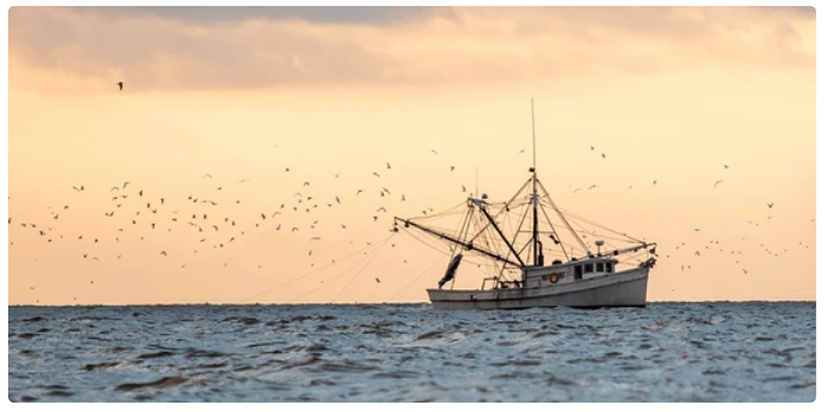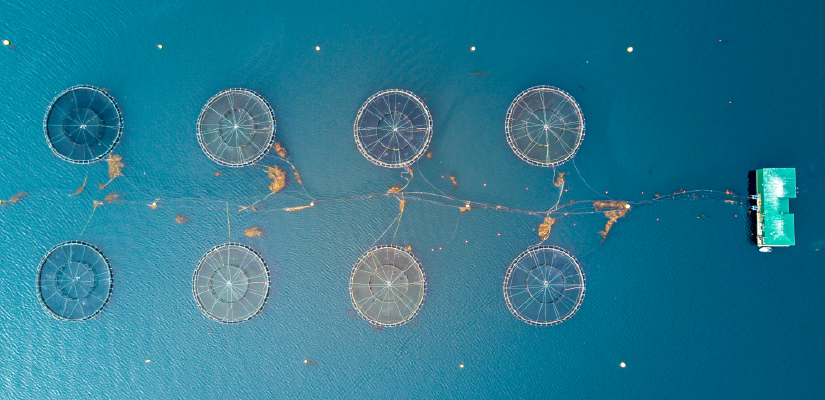ES akvakultūra

ES akvakultūra
Eiropas Savienības (ES) kopējā zivsaimniecības politikā (KZP) akvakultūra ir definēta kā “ūdens organismu audzēšana vai kultivēšana, izmantojot paņēmienus, kas paredzēti, lai palielinātu attiecīgo organismu ražošanu, pārsniedzot vides dabiskās spējas, ja organismi paliek fiziskas vai juridiskas personas īpašumā visā audzēšanas un kultivēšanas posmā, līdz pat ieguvei un to ieskaitot”.
Akvakultūra ir viena no visstraujāk augošajām pārtikas ražošanas nozarēm pasaulē, un tā arvien vairāk veicina pārtikas piegādi un ekonomikas izaugsmi pasaulē.
Eiropā akvakultūrai ir būtiska nozīme piekrastes un upju teritoriju sociālekonomiskajā attīstībā un jūras upju un zvejas kultūras saglabāšanā. 2020. gadā ES akvakultūras nozare sasniedza 1,2 miljonus tonnu pārdošanas apjoma un 3,9 miljardus EUR apgrozījuma vērtībā un tieši nodarbināja aptuveni 57 tūkstošus cilvēku, kas strādāja aptuveni 14 tūkstošos uzņēmumu. Tie galvenokārt ir mikrouzņēmumi un mazie uzņēmumi, un tiem parasti pieder ģimene (STECF 24–14).
ES akvakultūras politikas juridiskais pamats ir 2013. gada KZP, kuras mērķis ir atbalstīt ES akvakultūras nozares izaugsmi, vienlaikus nodrošinot tās ekonomisko, vidisko un sociālo ilgtspēju, lai nodrošinātu veselīgas pārtikas avotu ES iedzīvotājiem un veicinātu pārtikas nodrošinājumu. Konkrētāk, 34. pantā “Veicināt ilgtspējīgu akvakultūru” ir noteikta atklāta koordinācijas metode starp dalībvalstīm, pamatojoties uz Komisijas stratēģiskajām vadlīnijām ilgtspējīgākai un konkurētspējīgākai ES akvakultūrai (pirmo reizi pieņemtas 2013. gadā un pārskatītas 2021. gadā).
Šīs pamatnostādnes ir Savienības akvakultūras politikas stratēģiskās koordinācijas centrālais pīlārs, un to mērķis ir veidot konkurētspējīgu un noturīgu ES akvakultūras nozari; piedalās zaļās pārkārtošanās procesā; nodrošina sabiedrības atbalstu un patērētāju informēšanu; uzlabo zināšanas un inovāciju. Pamatojoties uz tiem, dalībvalstīm tika lūgts pārskatīt savus valsts daudzgadu stratēģiskos plānus (MNSP) attiecībā uz akvakultūru, kuros tām ir jāizklāsta savi plāni, mērķi un piemēroti pasākumi ilgtspējīgas akvakultūras veicināšanai un attīstībai savā teritorijā. Publicētie MNSP, tostarp kopsavilkums angļu valodā, ir atrodami AAM tīmekļa vietnes sadaļā “Informācija par valsti”.
Stratēģisko pamatnostādņu un JTSP īstenošana tiek atbalstīta ar finansējumu, kas darīts pieejams Eiropas Jūrlietu un zivsaimniecības fondā (EJZAF), kurš darbojas no 2021. līdz 2027. gadam. Ar akvakultūru saistītu pētniecību un projektus finansē arī citas ES finansēšanas programmas, piemēram, “Apvārsnis Eiropa” vai BlueInvest II.
Uzziniet vairāk par ES akvakultūras nozari šādās saitēs:
- Komisijas Jūrlietu un zivsaimniecības ģenerāldirektorāts (MARE ĢD)
- Zivsaimniecības zinātnes, tehnikas un ekonomikas komiteja (ZZTEK) — ES akvakultūras nozare — 2024. gada ekonomikas ziņojums (ZZTEK 24–14)
ES akvakultūras palīdzības mehānisms

ES akvakultūras palīdzības mehānisms
ES akvakultūras palīdzības mehānisma (AAM) mērķis ir atbalstīt dalībvalstis, akvakultūras nozari un citas attiecīgās ieinteresētās personas 2021.–2030. gada stratēģisko vadlīniju par ilgtspējīgāku un konkurētspējīgāku ES akvakultūru īstenošanā, nodrošinot loģistikas, administratīvo un tehnisko palīdzību, kā arī vienas pieturas aģentūru zināšanām un praksei par ilgtspējīgu akvakultūru ES.
Palīdzības mehānisms ir daļa no pakalpojumu līguma, ko kopīgi pārvalda Eiropas Klimata, infrastruktūras un vides izpildaģentūra (CINEA) un MARE ĢD. Konsorciju koordinē NTT DATA,Poseidon, SCOPE — Netcompany,Eiropas Akvakultūras sabiedrība (EAS) un Eiropas Akvakultūras tehnoloģiju un inovāciju platforma (EATIP). Pakalpojumu līgums sākās 2024. gada jūlijā un darbosies līdz 2026. gada jūnijam.
Mērķi
AAM sniedz Eiropas Komisijai un ES dalībvalstīm loģistikas, tehnisko un administratīvo atbalstu jauno stratēģisko pamatnostādņu īstenošanā.
Konkrēti, lai ES AAM sasniegtu savu galīgo mērķi, būtiski ir vairāki mērķi:
- Zināšanu un labas prakses apkopošana un apmaiņa, attiecīgu pasākumu popularizēšana, ziņu un citas informācijas izplatīšana par ilgtspējīgu akvakultūru ES.
- Nodrošināt tehniskās zināšanas par ilgtspējīgu akvakultūru, palīdzot ES Komisijai izstrādāt vadlīnijas un informatīvus dokumentus par dažādiem akvakultūras politikas aspektiem;
- Apmācības un e-mācību rīku izstrāde par šiem norādījumu dokumentiem un informatīviem dokumentiem
- Atbildes uz dalībvalstu un ieinteresēto personu jautājumiem par izstrādātajiem vadlīniju dokumentiem
- Organizēt pasākumus, darbseminārus, konferences, apmācību un tehniskas sanāksmes, kas paredzētas ES dalībvalstīm, akvakultūras nozarei un citām ieinteresētajām personām, lai atbalstītu ES akvakultūras stratēģisko pamatnostādņu īstenošanu.
Saistītas saites
Ir izveidoti ES references centri dzīvnieku labturības jomā (paredzēti saskaņā ar Oficiālo kontroļu regulu, kas pieņemta 2017. gada martā un ar ko saskaņo ES noteikumus par oficiālajām kontrolēm visā lauksaimniecības un pārtikas ķēdē), lai palīdzētu ES dalībvalstīm veikt oficiālās kontroles attiecībā uz dzīvnieku labturības noteikumiem saimniecībā, pārvadāšanas laikā un kaušanas vai nonāvēšanas laikā.
2024. gada janvārī izveidotais Eiropas Savienības ūdensdzīvnieku labturības references centrs ( EURCAW-Aqua) tika izveidots saskaņā ar Eiropas Parlamenta un Padomes Regulu (ES) 2017/625, un tas atbalstīs Eiropas Komisijas un dalībvalstu darbības, veicot zinātniskus un tehniskus pētījumus, kā arī rīkojot mācību kursus un izplatot pētniecības konstatējumus un informāciju par tehniskajām inovācijām, galvenokārt koncentrējoties uz zivju, galvkāju un dekapsulu labturību.
Prioritāte tiks piešķirta saimniecībās audzētām ūdensdzīvnieku sugām, kurām ir ekonomiska nozīme Eiropas akvakultūrā. EURCAW-Aqua ir strukturēta tā, lai risinātu galvenās problēmas, kas saistītas ar ūdens organismu labturības novērtēšanu, proti, lielo audzēto sugu skaitu, lauksaimniecības sistēmu daudzveidību un dažādām ūdens vidēm.
EURCAW-Aqua veiks un veicinās pētniecību nepietiekami attīstītajā ūdensdzīvnieku labturības jomā un iesaistīsies sabiedrības informēšanā un informētībā.
EURCAW-Aqua darbs atbalstīs ūdensdzīvnieku labturības mērķus, kas ietverti stratēģiskajās pamatnostādnēs par ilgtspējīgu Eiropas akvakultūru.
Eiropas partnerība dzīvnieku veselības un labturības jomā (EUP AHW) ir līdzfinansēta Eiropas partnerība pētniecībai un inovācijai, kas izveidota pēc EK iniciatīvas, lai risinātu dzīvnieku, tostarp ūdensdzīvnieku, infekcijas slimību problēmu un veicinātu dzīvnieku labturību.
Paredzams, ka partnerība, kas tika uzsākta 2024. gadā, septiņu gadu laikā ieguldīs 360 miljonus eiro, lai veicinātu pētniecību un atvieglotu sadarbību starp visiem dalībniekiem.
Partnerības mērķis ir uzlabot starpnozaru sadarbību un, izmantojot pieeju “Viena veselība” un “Viena labklājība”, nodrošināt ietekmi uz sabiedrību.
EUP AHW mērķi atbilst Eiropas zaļajam kursam un ar to saistītajai stratēģijai “No lauka līdz galdam”. Taisnīgas, veselīgas un videi draudzīgas pārtikas sistēmas vārdā.
Enerģētikas pārkārtošanas partnerība ES zvejniecības un akvakultūras jomā (ETP) ir sadarbības platforma, kuras mērķis ir paātrināt enerģētikas pārkārtošanu Eiropas zvejniecības un akvakultūras nozarēs.
ETP, ko Eiropas Komisija sāka 2023. gadā, novērš tehniskos, finansiālos un regulatīvos šķēršļus, apvienojot ieinteresētās personas, lai rastu praktiskus un īstenojamus risinājumus.
Partnerībā var piedalīties akvakultūras un zivsaimniecības nozares ieinteresētās personas. Partnerības nolūks ir, izmantojot tematiskus dialogus un darbseminārus, dalībnieki pievērsties tādām svarīgām jomām kā inovācija, tehnoloģijas, prasmes un finanses.
Šo darbību rezultāti palīdzēs izstrādāt (brīvprātīgu) ceļvedi, kurā līdztekus konkrētām darbībām būs noteikti izmērāmi īstermiņa, vidēja termiņa un ilgtermiņa atskaites punkti ar mērķi virzīt nozari uz klimatneitralitāti līdz 2050. gadam.
ETP ir centrs zināšanu apmaiņai, paraugprakses demonstrēšanai un tādu inovatīvu projektu izcelšanai, kas atbalsta enerģētikas pārkārtošanu.
Turklāt ETP vada ETP atbalsta grupu, kurā ETP ieinteresētās personas var sadarboties, lai apspriestu problēmas, izpētītu stratēģiskas pieejas un palīdzētu veidot nozares nākotni.
